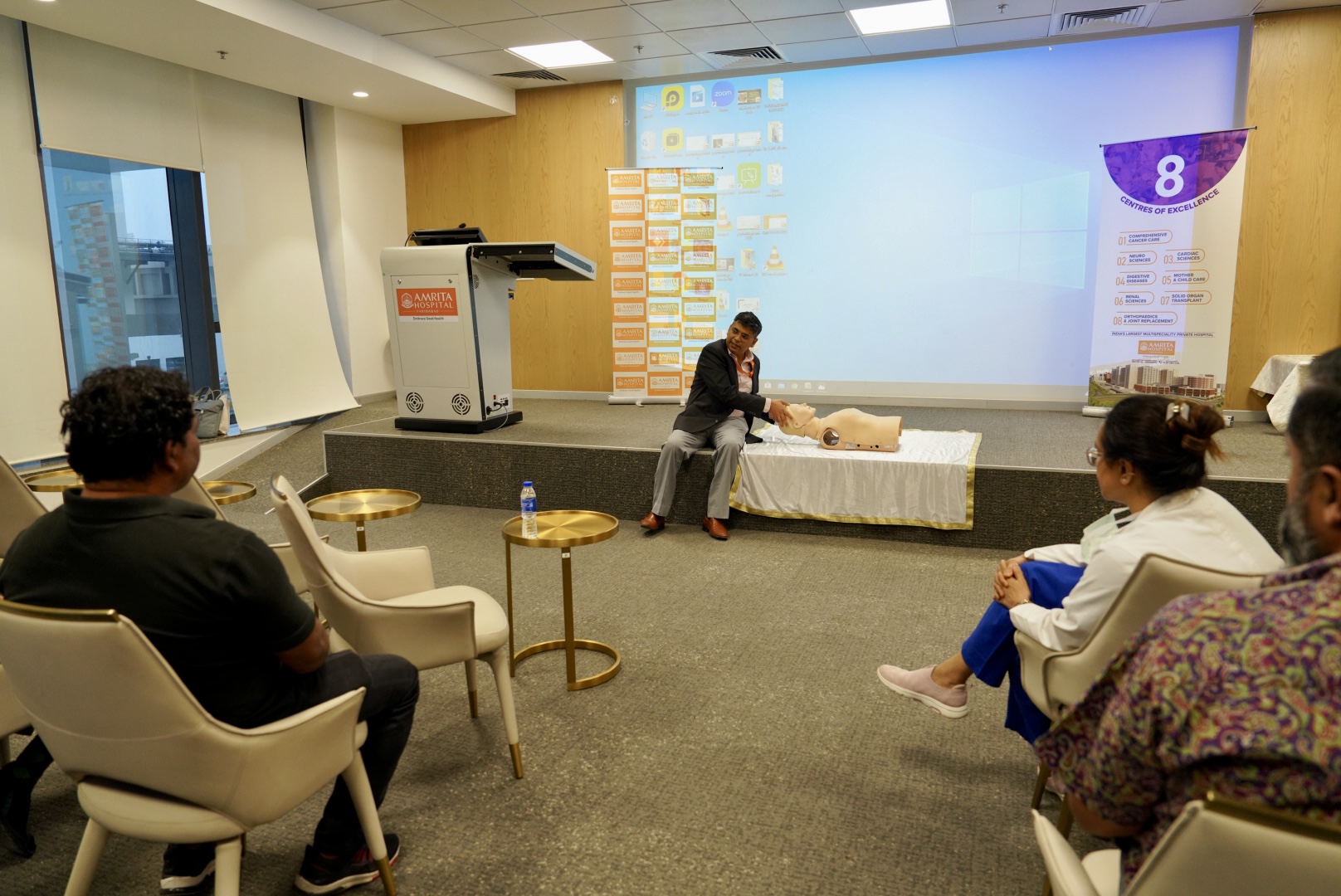
FARIDABAD : It is important to increase awareness about prevention of head injuries among people as it is the main cause of death in accidents, with India known as the head injuries capital of the world due to high number of road accidents. This was said by doctors at a Continuing Medical Education (CME) program on Head Injury Management held by Amrita Hospital, Faridabad.
More than 70 medical practitioners from Faridabad and Delhi-NCR, who are usually the first responders in cases of head injuries, attended the event to learn the main treatment concepts. Experts from Amrita Hospital also provided head injury first-aid and CPR training to paramedics, ambulance drivers and traffic policemen. In addition, community awareness programs were conducted in association with the Rotary Club, YMCA and Life Care Foundation to reduce the incidence of head injuries in the society.
Said Dr. Anandh Balasubramaniam, Head – Neurosurgery, Amrita Hospital, Faridabad: “Every 5-10 minutes, someone in India dies from a head injury. If people experience symptoms like decreased consciousness, headache, vomiting, altered behavior, weakness of limbs, changes in speech or seizures after a head injury, they need to seek help immediately. First 1-2 hours, called the golden hour, are extremely critical to save lives. If people see someone with severe head injury, they should try to stop the bleeding, give CPR if possible, and rush the patient to a multi-disciplinary hospital that can manage all required treatment under one roof.”
Added Dr. Gaurav Kakkar, Lead, Neuro Anaesthesia & Neurocritical Care, Amrita Hospital, Faridabad: “Latest technology like advanced CT scans, intervention machines and modern ICU help in preventing fatalities due to traumatic brain injuries. However, late arrival of patients to the hospital and indecision from the next of kin pose challenges to doctors. Head injuries can lead to severe complications like coma, disability, paralysis, and long recovery period. Simple preventive measures can save thousands of lives. People should wear helmets while riding two-wheelers and use seat belts in cars in both front and rear seats. Children should be discouraged from using the sunroof in cars as these can lead to severe injuries during accidents or sudden braking.”
The CME was divided into themes like social implications of head injuries, pediatric brain trauma, rehabilitation strategies for brain-injured patients, radiology and ventilatory strategies, intracranial pressure monitoring, management of traumatic brain injuries in a Neuro ICU, and importance of head injury management in a tertiary center.


